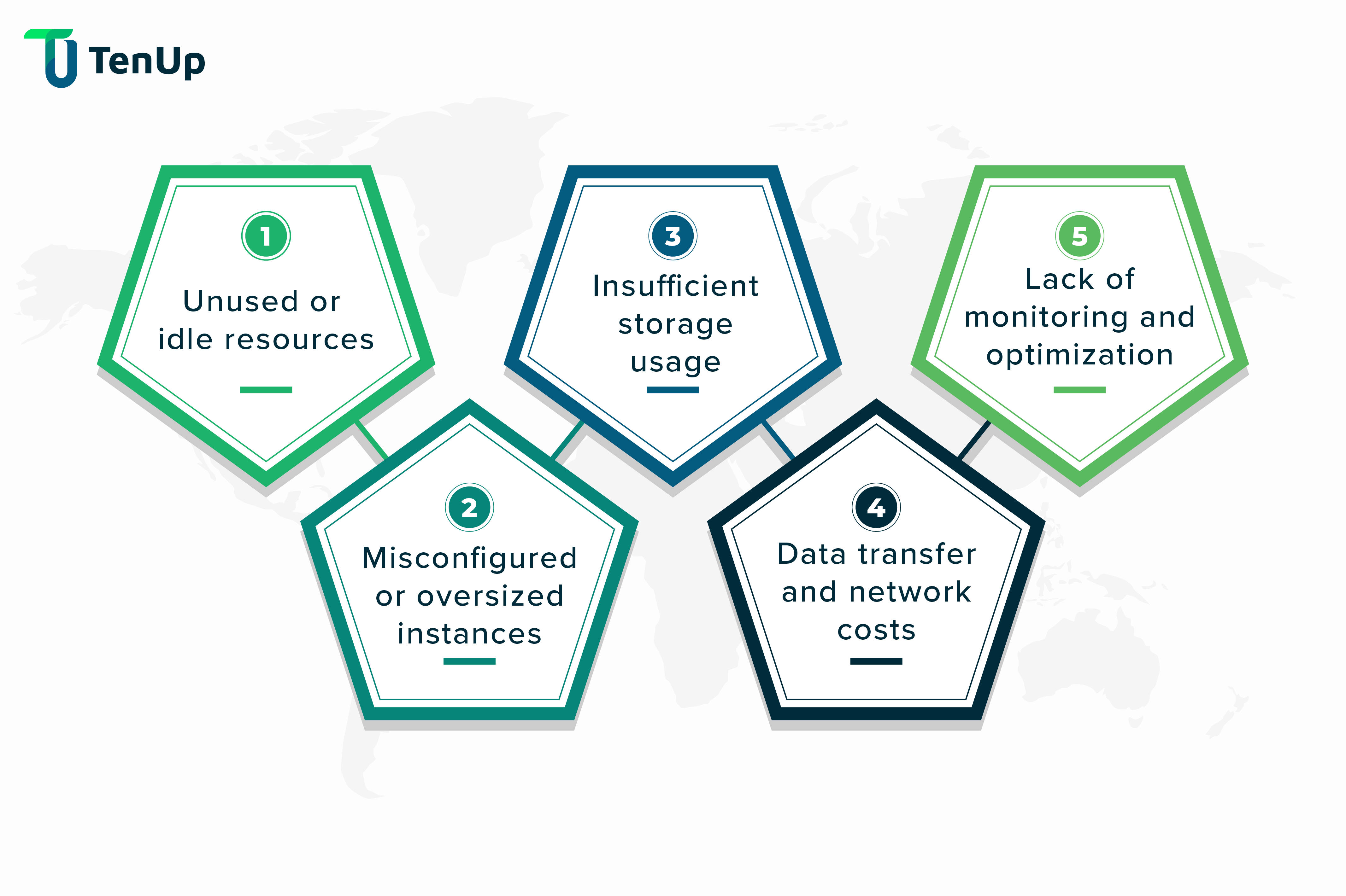#Cloud#CostOptimization
Cloud-based services and solutions have revolutionized business operations, offering scalability, flexibility, and cost-efficiency. The complexity of managing costs increases as the adoption of cloud-based services increases. Preventing overbilling is necessary for both controlling costs and maintaining budgetary discipline. In this blog, we will look into the common causes of overbilling and proactive measures to prevent them in cloud-based services.


To achieve effective cloud cost management, it's crucial to identify the key factors that contribute to unexpected expenses. By understanding these cost drivers and implementing proactive strategies, businesses can optimize cloud spending and prevent unnecessary charges.Some of the main reasons for overbilling include the following:

The presence of unused or idle resources is one of the major causes of overbilling in cloud-based services. When organizations fail to deactivate or delete resources that are no longer in use, they continue to pay costs without adding any value. Virtual machines, storage volumes, databases, and other cloud-based assets are examples of these resources. Organizations can reduce unnecessary costs by reviewing and identifying unneeded resources and taking proactive steps to deactivate or delete them.
Choosing the wrong instance types or configuring resources with excess capacity can lead to overbilling. If instances are oversized or overprovisioned, organizations pay for more resources than actually required. It is crucial to analyze workload demands accurately and select the appropriate instance types that align with performance and resource needs. By rightsizing instances and optimizing resource allocation, organizations can optimize costs and eliminate unnecessary expenses.
Inefficient storage practices have a big impact on cloud billing. Data that is redundant, outdated, or useless when stored longer, costs more to store. It is essential to implement effective data lifecycle management strategies, including archiving or deleting data that is no longer needed. Organizations can find opportunities to reduce unnecessary expenditures, increase resource efficiency, and optimize storage consumption by routinely analyzing their usage of storage.
Cloud solutions companies often charge for data transfer between different regions or availability zones within their infrastructure. Organizations with dispersed cloud deployments or significant data transfer needs may see higher costs in this area. Organizations can lower the cost of data transfers and increase the effectiveness of their networks by employing data transfer optimisation techniques, such as deploying content delivery networks (CDNs), caching, or data compression.
Without proper monitoring and optimization practices in place, organizations may overlook cost anomalies and miss opportunities for optimization. Regularly monitoring cloud usage, analyzing usage patterns, and leveraging cost management tools can provide insights into resource consumption and identify areas for optimization. Automation can also play a significant role in optimizing cloud expenditure by implementing auto-scaling, scheduling, or rightsizing mechanisms.
To effectively prevent overbilling in cloud-based services, organizations should adopt and implement proactive measures for cloud cost optimization. Businesses can have better control over their cloud expenditure and avoid cost surprises by implementing these strategies. These are the key proactive measures to consider:
Implementing effective resource monitoring processes is essential for identifying and addressing potential overbilling problems. Organizations can monitor resource usage, performance metrics, and cost trends by using cloud monitoring tools and services. Setting up alerts and notifications based on predefined thresholds enables the timely identification of abnormal usage patterns or unexpected cost spikes.
These alerts can prompt administrators to investigate and take necessary actions, such as reducing resource utilization, identifying inactive instances, or improving storage efficiency. Proactive monitoring empowers businesses to stay in control of their cloud expenses by quickly responding to cost-related anomalies.
Regularly reviewing and analyzing cost reports provided by cloud service providers allows organizations to gain insights into their spending patterns. By examining detailed cost breakdowns, businesses can identify areas of high expenditure and understand the factors driving those costs. This analysis helps in identifying opportunities for optimization, such as eliminating unused resources, rightsizing instances, or optimizing storage usage.
Setting up budget alerts and notifications is an effective way to proactively monitor and control cloud spending. Organizations can define budget thresholds and receive notifications when costs approach or exceed those limits. This allows for timely intervention and corrective actions to prevent overbilling. Budget alerts help businesses stay informed about their expenditure, enabling them to make informed decisions and take necessary steps to stay within their financial boundaries.
Implementing cost governance policies establishes guidelines and practices for managing and controlling cloud costs. This includes defining cost allocation methodologies, tagging resources for better tracking and accountability, and establishing approval processes for resource provisioning. By enforcing cost governance policies, organizations can promote cost-consciousness and ensure that cost considerations are integrated into their cloud operations. It helps in preventing unnecessary expenses and fosters a culture of responsible cloud resource usage.
The last proactive approach to cloud optimization cost is continuously evaluating and optimizing resource and service usage. Organizations could discover opportunities to rightsize instances, consolidate workloads, or implement more cost-effective service offerings by regularly analyzing resource requirements. Leveraging automation and orchestration tools can improve cost efficiency and enhance resource management.
Continuous optimization also involves exploring reserved instances or savings plans to leverage discounted pricing for long-term usage. By continuously optimizing resource and service utilization, organizations can make sure that their cloud environment is always in line with their actual needs, resulting in cost savings and preventing unnecessary expenses.
Organizations must practice proactive measures for better finances by adopting custom Cloud Solutions. They help prevent overbilling and optimize the costs of cloud-based services. Cloud experts at Tenup help organizations by finding the right cause of overbilling, followed by implementing the right proactive measure. Contact us today to get accurate solutions to your cloud services overbilling issue.